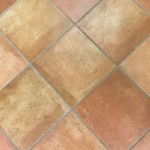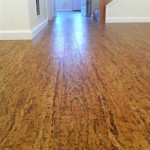Laying Floating Floor Over Tiles: A Step-by-Step Guide to a Seamless Installation
Transforming a tiled floor with a floating floor is an excellent way to update the look of your home without the hassle and expense of a complete renovation. Floating floors are easy to install and can be laid over most existing surfaces, including tiles. However, there are a few essential steps you need to follow to ensure a successful installation.
Preparation
Before you begin, it's crucial to prepare the tiled surface properly. Ensure the tiles are clean, dry, and free of any dirt or debris. If there are any loose or damaged tiles, they should be repaired or replaced to provide a stable base for the floating floor.
Next, check the flatness of the tiled surface. Floating floors require a level surface to prevent buckling or warping. If there are any uneven areas, you may need to use a self-leveling compound to create a smooth and level surface.
Underlayment
An underlayment is a thin layer of material that is installed between the tiled floor and the floating floor. It serves several purposes, including providing a moisture barrier, reducing noise, and providing a smooth and even surface for the floating floor to rest on.
Choose an underlayment that is compatible with your floating floor and the existing tiled surface. Unroll the underlayment and cut it to fit the area where the floating floor will be installed. Overlap the edges by a few inches to prevent gaps.
Floating Floor Installation
Now it's time to install the floating floor. Start by laying the first row of planks along one wall. Ensure they are aligned straight and parallel to the wall. To connect the planks, engage the locking system by tapping the edges together with a tapping block or hammer and tapping bar.
Continue installing the remaining rows, ensuring each row is securely locked together. Stagger the joints between the rows to prevent weak spots. As you reach the last row, you may need to cut the planks to fit the remaining space. Use a jigsaw or utility knife to make precise cuts.
Expansion Gap
Floating floors expand and contract with changes in temperature and humidity. To prevent buckling, it's essential to leave an expansion gap around the perimeter of the floor. Use spacers to ensure a consistent gap between the floating floor and the walls or any other fixed objects.
Once the floating floor is installed, remove the spacers and install baseboards or molding to cover the expansion gap and enhance the finished look.
Finishing Touches
Finally, add the finishing touches to your newly installed floating floor. Vacuum or sweep the floor to remove any debris. If desired, apply a protective sealant to enhance durability and protect the surface from scratches and stains.
Laying a floating floor over tiles is a relatively simple task that can transform the look of your home. By following these steps carefully, you can achieve a professional-looking and durable floor that will last for years to come.

Can Timber Flooring Be Laid Over Tiles Cb Floors

Installing Laminate Tile Over Ceramic Diy Floors Wonderhowto

How To Install Floating Vinyl Flooring Over Old Floors Simply2moms

Can You Put Laminate Flooring Over Tile Twenty Oak

How To Install A Floating Tile Floor

How To Install Laminate Flooring Over A Tile Floor 2024 Today S Homeowner

Install Hardwood Flooring Over Tile Floor Double Glue Down Method

Install Laminate Flooring Over Ceramic Tile

Should You Install Vinyl Floor Over Tile

Can You Install Wood Flooring Over Tiled Floors Havwoods
Related Posts








